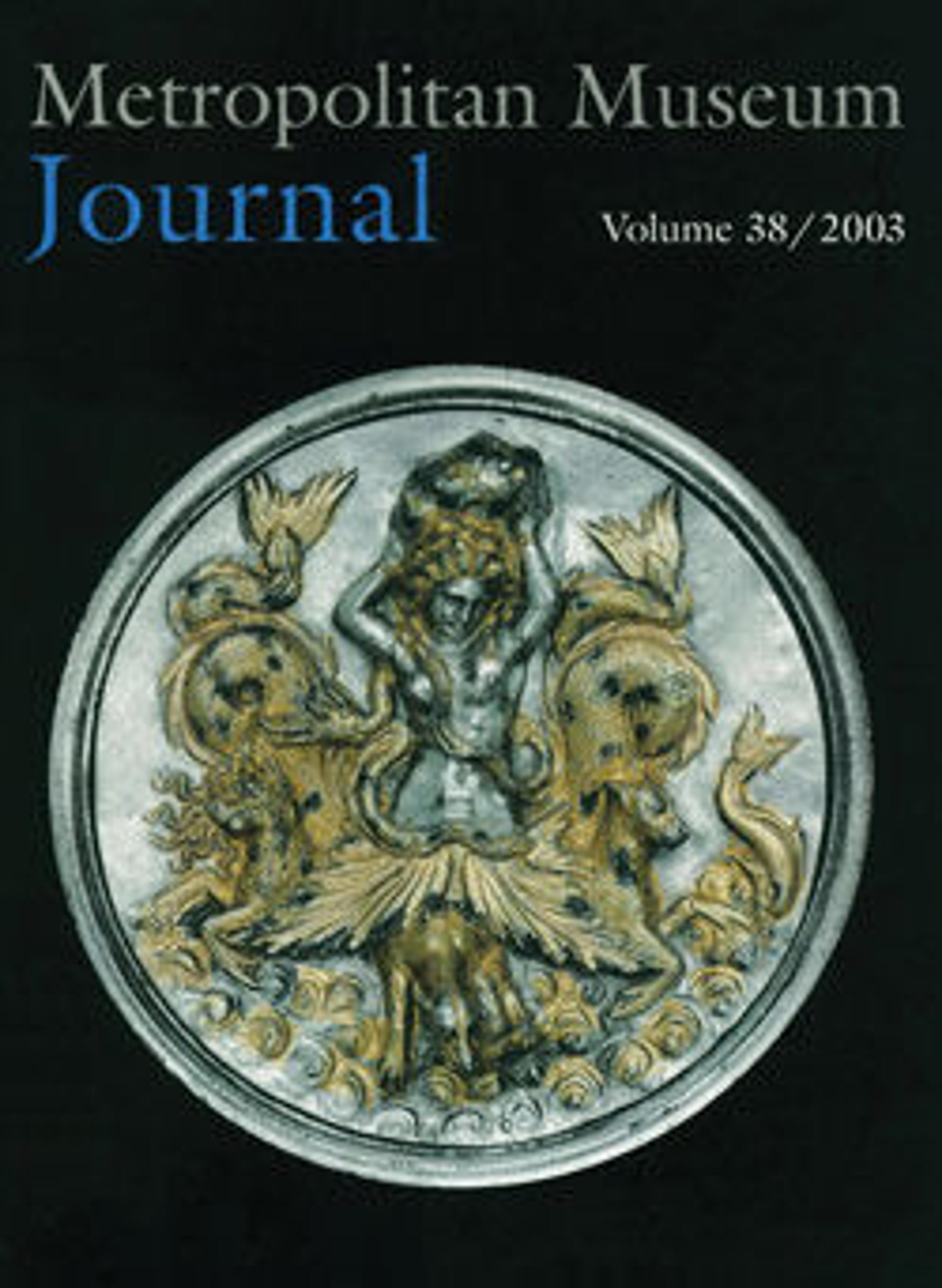Infantry Armor
The open-faced burgonet and the absence of a lance rest identify this as an armor for infantry or light cavalry use. The quality of its construction and decoration indicates that it was probably intended for an officer. Infantry armed with swords, pikes, or handguns played an increasingly important role in military tactics throughout the sixteenth century.
The decoration of this armor typifies that used most frequently in Italy from about 1550 to about 1590. The bands of ornament are filled with classically inspired trophies of armor, musical instruments, and masks. By the 1570s, however, the individual designs had become so stylized that they became almost unrecognizable. Dated examples of this type of armor are rare.
The decoration of this armor typifies that used most frequently in Italy from about 1550 to about 1590. The bands of ornament are filled with classically inspired trophies of armor, musical instruments, and masks. By the 1570s, however, the individual designs had become so stylized that they became almost unrecognizable. Dated examples of this type of armor are rare.
Artwork Details
- Title: Infantry Armor
- Armorer: Upper plate of the gorget, skirt lames, and cheek pieces made by Daniel Tachaux (French, 1857–1928, active in France and America) in the Metropolitan Museum of Art, Armor Workshop
- Date: dated 1571; upper plate of the gorget, skirt lames, and cheek pieces, 1917
- Culture: Italian
- Medium: Steel, leather, brass
- Dimensions: Wt. 33 lb. 11 oz. (15.28 kg)
- Classification: Armor for Man-1/2 Armor
- Credit Line: Rogers Fund, 1916
- Object Number: 16.154.2a–l
- Curatorial Department: Arms and Armor
More Artwork
Research Resources
The Met provides unparalleled resources for research and welcomes an international community of students and scholars. The Met's Open Access API is where creators and researchers can connect to the The Met collection. Open Access data and public domain images are available for unrestricted commercial and noncommercial use without permission or fee.
To request images under copyright and other restrictions, please use this Image Request form.
Feedback
We continue to research and examine historical and cultural context for objects in The Met collection. If you have comments or questions about this object record, please complete and submit this form. The Museum looks forward to receiving your comments.
